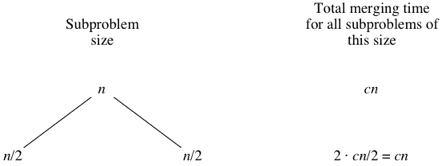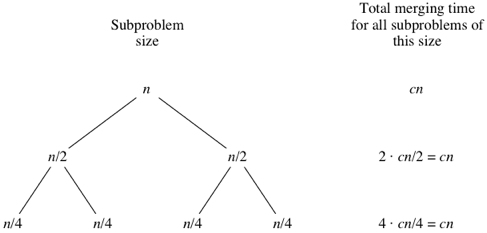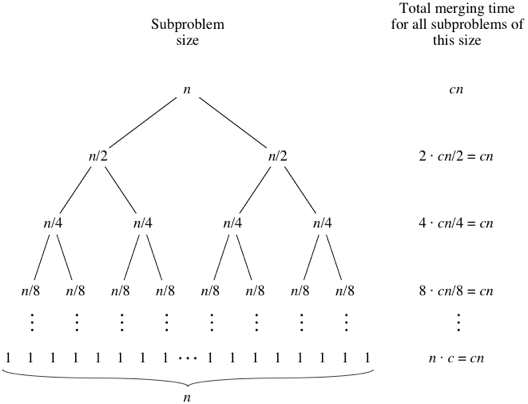We assume that we're sorting a total of
- The divide step takes constant time, regardless of the subarray size. After all, the divide step just computes the midpoint
of the indicesand. Recall that in big-Θ notation, we indicate constant time by. - The conquer step, where we recursively sort two subarrays of approximately
elements each, takes some amount of time, but we'll account for that time when we consider the subproblems. - The combine step merges a total of
elements, takingtime.
If we think about the divide and combine steps together, the
Let's draw out the merging times in a "tree":

Computer scientists draw trees upside-down from how actual trees grow. Atree is a graph with no cycles (paths that start and end at the same place). Convention is to call the vertices in a tree its nodes. The root node is on top; here, the root is labeled with the

What do you think would happen for the subproblems of size

As the subproblems get smaller, the number of subproblems doubles at each "level" of the recursion, but the merging time halves. The doubling and halving cancel each other out, and so the total merging time is

When we use big-Θ notation to describe this running time, we can discard the low-order term (
Read more from Source: https://www.khanacademy.org/computing/computer-science/algorithms/merge-sort/a/analysis-of-merge-sort


0 comments:
Post a Comment